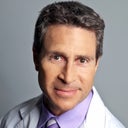Posted underFUE Hair Transplant q&a
Why do very, very few hair transplant doctors offer the no shave FUE option (even when a small amount of grafts are harvested)?
Why do very, very few hair transplant doctors offer the no shave FUE option (even when a small amount of grafts are harvested)?
Answers (11)
From board-certified doctors and trusted medical professionals

Dr. Jae Pak, MD
Hair Restoration Surgeon, Board Certified in Emergency Medicine
Answer
Dr. Michael Meshkin, MD - Account Suspended
Board Certified Hair Restoration Surgeon
Answer
Dr. Cory Torgerson, MD, PhD, FRCSC - Account Suspended
Facial Plastic Surgeon, Certified in Otolaryngology – Head and Neck Surgery
Answer
More FUE Hair Transplant Questions
See all FUE Hair Transplant Q&AWE SEND PRETTY
EMAILS
What’s trending? Who’s turning heads? Which TikTok myths need busting? We’ve got you. No fluff, no gatekeeping—just real talk. Get our free, unfiltered newsletter.
